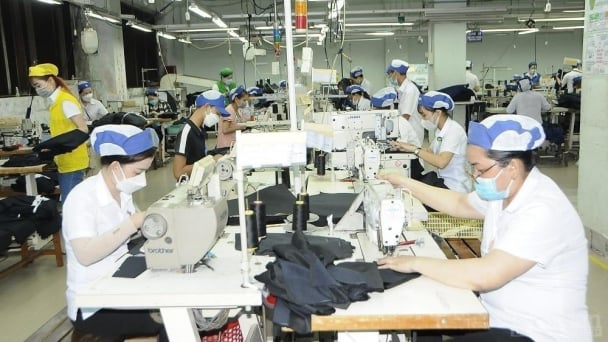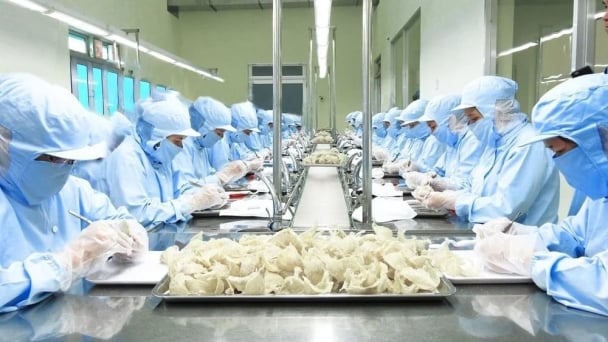May 16, 2025 | 09:57 GMT +7
May 16, 2025 | 09:57 GMT +7
Hotline: 0913.378.918
May 16, 2025 | 09:57 GMT +7
Hotline: 0913.378.918

A John Deere combine harvests winter wheat near Skedee, Oklahoma, U.S. June 13, 2024.
The country still leads in corn exports. That title, however, has recently been threatened by Brazil, the same party that demoted U.S. soybean exporters to the No. 2 spot.
But the United States’ grip on global corn, soybean and wheat exports is as loose as it’s ever been.
U.S. President Donald Trump on Wednesday announced sweeping reciprocal tariffs on all trade partners, a risk U.S. farmers accepted when largely backing him in last year’s election.
Trade barriers, whether real or perceived, could certainly chip away at U.S. export relevance in a space it once overwhelmingly controlled.
Rival grain suppliers have padded both their crops and export capabilities over the decades, sometimes capitalizing on U.S. misfortunes along the way.
On average over the last five years, the United States accounted for a record-low 31% of annual global corn exports. Twenty years ago, the U.S. portion was 61%, though it had topped out at 80% in the late 1970s.
The biggest drop-off was seen between the late 2000s and early 2010s, when the share went from 59% to 35%. This period included the global financial crisis and a prominent string of U.S. crop failures.
No. 2 corn supplier Brazil accounted for only 5% of exports some 20 years ago, though its share is now up to 22%.
The U.S. portion of world soybean exports has plunged significantly, recently averaging a record-low 27%. That was above 80% through the 1970s, falling to 50% by the turn of the century.
Brazil became the leading soy supplier in 2012-13, and its share has climbed. Brazil now accounts for 55% of global soybean exports versus 39% a decade ago, a period including the first U.S. trade war with China, when Beijing reduced reliance on U.S. beans.
The United States was the top wheat exporter until about 10 years ago, and today it is the No. 4 supplier.
But U.S. wheat export dominance was at its peak in January 1980 when then-President Jimmy Carter on live television cancelled 17 million metric tons of U.S. grain export contracts with the Soviet Union due to the Soviet invasion of Afghanistan.
This became known as the U.S. grain embargo.
At that time, the United States accounted for 44% of global wheat exports. That share now sits at a record-low 11%, down from 26% some twenty years ago.
Carter’s speech echoed sentiments recently shared by Trump, including the desire to minimize harm to the American farmer and massively increase the volume of agricultural products used domestically.
U.S. intelligence concluded in 1981 that the U.S. embargo was substantially less harmful to Moscow’s grain stocks than intended because the Soviets were able to source more grain from other suppliers than the Americans had anticipated.
That should sound familiar to the soybean market, as Brazil in recent years has shipped more soybeans than traders and analysts previously thought possible.
In the early 1980s, the Soviet Union was the top wheat importer, accounting for more than 20% of annual imports. Today, Russia is the top wheat exporter, supplying more than 20% of annual shipments.
The United States is the leading producer of corn, No. 2 in soybeans and No. 4 in wheat. Similar to exports, the recent U.S. production shares are also all-time lows.
The United States accounts for 31% of global corn production, down from about 41% some 20 years ago. The country accounted for more than half of global soybean production until about 1990, though the share now sits at 28%.
U.S. wheat accounted for about 15% of global production in 1980, though today it accounts for 6%. Unlike corn and soybeans, the U.S. wheat crop is now generally smaller than it was decades ago.
But Russia has expanded its wheat crop by more than 70% over the last decade, accounting for 11% of world output. That compares with 7% a decade ago.
Brazil has increased its soybean production by about 85% over the last decade and corn by around 55%, taking advantage of market opportunities and upbeat profitability. Brazil grows 39% and 10% of global soy and corn output, respectively, up from 30% and 8% a decade ago.
Not all global crops can infinitely expand from here, but the lesson should be clear. Significantly more grain is produced outside the United States versus decades ago, and those suppliers may be ready to act if Washington’s latest move backfires.
(Reuters)

(VAN) Japan's efforts to lower the price of rice through the release of its stockpile may finally be making some progress, albeit at a snail's pace.

(VAN) U.S. tariffs are not only a 'shock', but also an opportunity for Vietnamese businesses to renew their mindset toward comprehensive development.

(VAN) As Bac Giang lychee enters the harvest season, Minister Do Duc Duy expects that the fruit will contribute greatly to agricultural exports due to standardized production and deep processing.

(VAN) Consumers have shown a preference for free-range eggs, but those farming systems are more vulnerable to biosecurity risks like bird flu.
/2025/05/09/5701-1-184335_301.jpg)
(VAN) Vietnam’s eel exports nearly doubled thanks to a mud-free farming model, opening up new prospects while still facing numerous barriers related to international standards.

(VAN) Minister Do Duc Duy warned that if production is not professionalized and supply chains are not transparent, the U.S. market could become a growth bottleneck.

(VAN) Delegating surveillance responsibilities to local authorities is a cost-saving and efficiency-boosting measure that removes a key bottleneck for enterprises, according to Director General Duong Tat Thang.